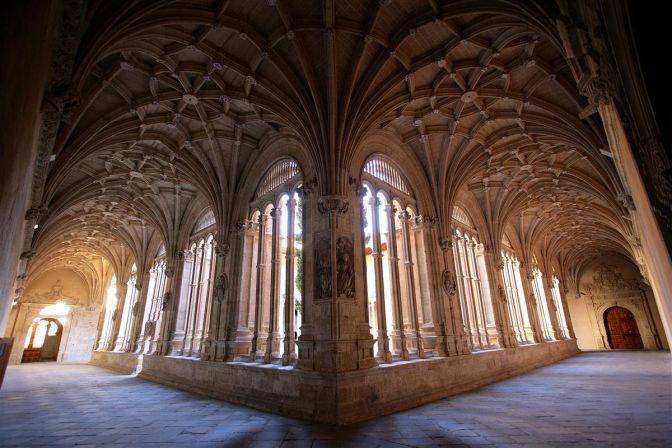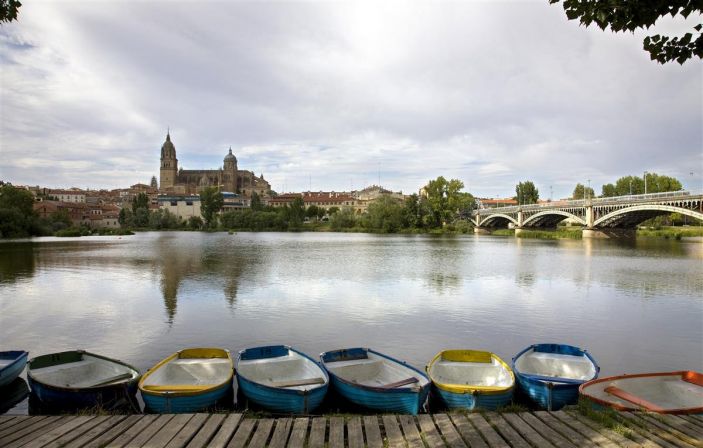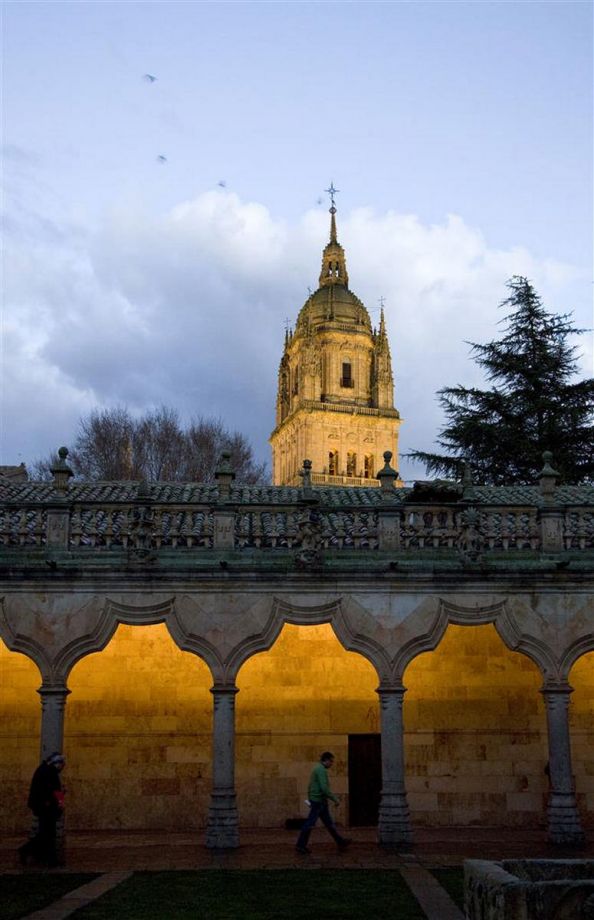Salamanca
St Teresa arrived in Salamanca to found her seventh convent in 1570. Her life and work left a trail of much importance during this time and her presence can be discovered in the city.
With two routes, Salamanca shows visitors the character of this fascinating woman.
Teresian Places
House of St Teresa, on Calle Crespo Rascón. She arrived in this house on 31 October 1570 and the building witnessed her facet as an entrepreneurial woman. The house, which was owned by the Ovalle family was where the night of the spirits took place. What was once a Carmelite convent for four years today belongs to the Servants of St Joseph and will go down in history as the place that inspired the famous “I live, but within myself am not alive”.
Pontificia University. The Jesuits, more specifically Father Álvarez, encouraged Teresa to visit Salamanca, a university city, and found a new convent here. They prepared the Book of the Foundations.
University of Salamanca. In 1922, when Don Miguel de Unamuno was Vice-Chancellor, the university made her Doctor Honoris Causa. It was the first title awarded to a woman by the University for the quality of her literature, spirituality and reformist values.
The relationship between St Teresa and the university is linked to Brother Luís de León, St John of the Cross and Don Miguel de Unamuno himself.
Cathedral of Salamanca. One of the most important chapels in the new church of the Cathedral of Salamanca is devoted to St Teresa of Jesus.
Convent of San Esteban. The Dominican fathers helped St Teresa of Jesus during her time in Salamanca as can be seen in the confessional box used by the Saint when she sought advice. The box can be visited inside the convent.
Finally, on Plaza Mayor we can see the medallion that is dedicated to her, located on the Pavilion of Petrineros. Next to the medallion, there are others of Brother Luis de León and Miguel de Unamuno.
Half-Open Spaces. Female Spirituality
Together with the great places of spirituality (the Cathedral of Salamanca, the Convent of San Esteban and the Clerecía), there are other, more intimate places, far-removed from the hustle and bustle, but also beautiful and important as Spaces of Female Spirituality.
House of St Teresa. Home to her seventh foundation and currently used as the Convent of the Servants of St Joseph, a congregation founded by Sister Bonifacia Rodríguez Castro. This house has been home to two saints, both of whom founded religious communities.
Convent of Santa María de las Dueñas. This palace was founded in 1419 and later donated to become a Convent for the Nuns of the Order of St Domingo. It has a beautiful cloister in the building in which the Dominican nuns live their lives of peace and retreat.
Convent of Santa Clara. In the 13th century, the nuns of St Clare, who belonged to the Franciscan order, turned the original shrine and neighbouring houses into a monastery. The church and convent were then built and the latter is today inhabited by the nuns of St Clare, who live in religious seclusion.
Convent of Las Úrsulas, founded in the mid-15th century by Don Alfonso de Fonseca. Since 1992, it has been inhabited by sisters of the Order of St Clare, who live in religious seclusion. The church choir stalls have been used as a convent museum, which contains a beautiful coffered ceiling in Italian-Mudejar style and panels by Juan de Borgoña (16th century), which once formed part of the now-disappeared high altar and portray various scenes from the religious life of St Ursula.
Y con sabor teresiano, la gastronomía de la ciudad, siempre que en su dieta vegetariana las carmelitas aceptaran “el ibérico”, aunque solo fuera por Navidad.
Oficina de Turismo de Salamanca
Plaza Mayor 32
37002 Salamanca
Tlfno. 923 21 83 42 / Fax 923 26 34 09
Horarios Verano:
Lunes a Viernes: 9:00 a 14:00 hrs / 16:30 a 20:00 hrs
Sábados: 10:00 a 20:00 hrs
Domingos y festivos: 10:00 a 14:00 hrs
Horarios Invierno:
Lunes a Viernes: 9:00 a 14:00 hrs / 16:00 a 18:30 hrs
Sábados: 10:00 a 18:30 hrs
Domingos y festivos: 10:00 a 14:00 hrs
www.salamanca.es



